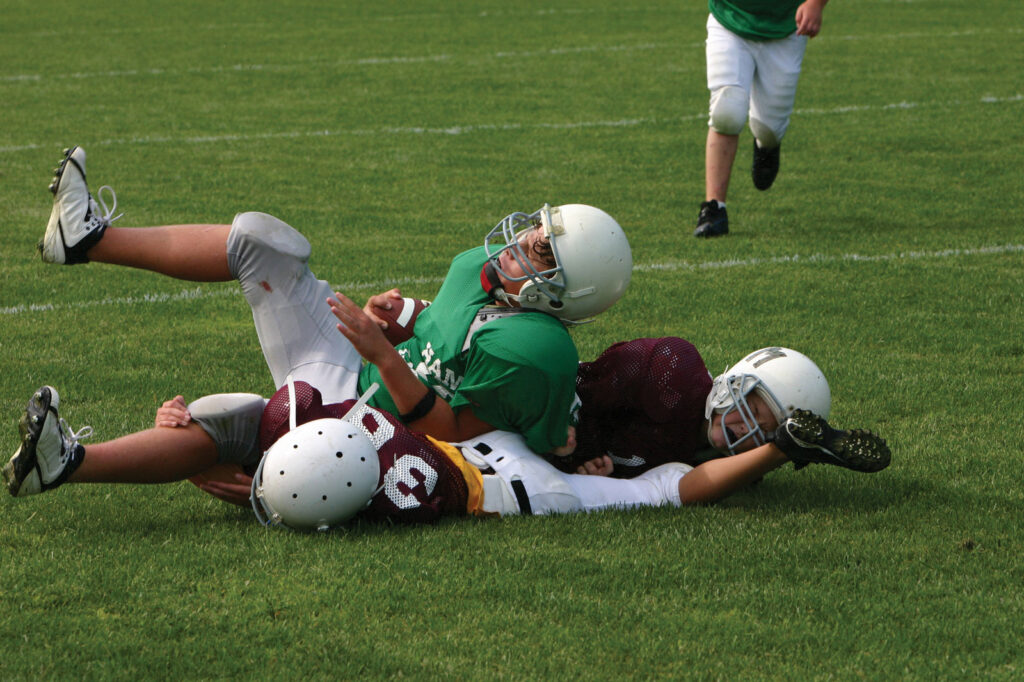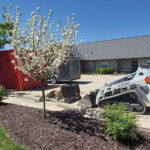Orthopedic doc and sports trainer offer insight on sports injuries.
Columbia residents are often passionate about staying in shape, which for some includes participating in sports. But a common aspect of sports is the injuries. And when one kind of sporting activity becomes popular, it’s only natural to see an increase in player injuries.
Case in point: Pickleball.
“The sport is a lot more popular now than it ever was,” says Dr. Christopher Farmer, a sports medicine physician with Columbia Orthopaedic Group. “That consists of people shifting from one activity to another, and then whatever ends up hurting them. It just happens to be more likely pickleball now than other sports previously.”

Farmer says pickleball-related injuries have increased compared to five years ago. He said that the increase is mostly due to more people playing the sport, though he is unsure if the overall rate of injury has increased.
“I just think that there are a lot more people playing,” Farmer explains. “And so now it’s a more common reason to see patients.”
Regarding pickleball, Farmer notes that the most common types of injuries are to the ankles, shoulders, and elbows. One common type of sporting injury is called “tennis elbow” and is simply caused by gripping an object, such as a tennis or pickleball racket. Besides this, another type of injury that can be caused by pickleball is an injury to the Achilles tendon “just because of the quick change of direction.” In addition, falling while playing pickleball can also cause injury.
Because many pickleball players are older individuals, age can be a factor regarding injuries. Farmer says that can affect such things as a player’s balance or body tissue quality, as it’s generally easier to hurt your body at an older age.
“But I see people in their seventies and eighties that are a lot healthier and tougher than people half their age,” he says. “So, it [age] is a little bit relative.”
Farmer adds that his son, who is in high school, enjoys playing pickleball with his friends.
“And he is not near as hardcore as a lot of these folks that are older,” he says. “It’s like they live and breathe it.”
While there has been an increase in pickleball injuries, Farmer notes that pickleball injuries themselves are not an outlier when compared to other sports-related injuries. During the fall season, when there is an increase in school sports, there will probably be more injuries from those activities compared to pickleball. And from there, pickleball injuries are less common during the winter months simply because not many people play it during that time of year.
Besides pickleball, Farmer says that he had seen an increase in football conditioning injuries from kids being in football training camps over the summer. However, there tend to be fewer sporting-related injuries during the summer because school sports are not organized at that time, he says, adding that the orthopedic practice’s busiest season for injuries is probably during the fall sports season. The uptick occurs especially from August through November.

Peak Sports and Spine
Stefanie West, a certified athletic trainer and director of sports medicine at Peak Sport and Spine, echoes Farmer’s observations.
“Injuries tend to follow suit with what [sport] is in season,” she says.
During the fall season, West explained that there are a lot of contact sports going on, such as football and soccer, along with additional fall sports, including baseball and cross country. She says that there tends to be a higher number of sports injuries — including concussions — during the fall season, but there is also a higher number of athletes participating.
For the same reason, the number of injuries generally goes down during the winter season. However, West adds, there are some wintertime sports, such as basketball and wrestling, with the latter also producing concussions. During the spring season, most sports tend to be related to running, like track and soccer, along with baseball.
Of the various sports, West says that the most severe injuries probably tend to “be from football, due to the nature of the sport, which can include concussions, neck injuries, and fractures. She adds that high school football injuries can be more serious than college football, due to the potential body differences between a high school freshman and a high school senior.
According to the Missouri State High School Activities Association’s 2021-22 Interscholastic Youth Sports Brain Injury Report, the leading sport for head injuries in 2021-2022 and 2020-2021 was football. In addition, other top seven head injury sports for two school years were boys and girls soccer, boys and girls basketball, wrestling, volleyball, and sideline cheerleading.
When it comes to preventing sports-related injuries, Farmer says individuals should know their limitations. He explains that there is nothing wrong with basic exercise to help keep your body healthy. Regardless of age, smaller exercise goals are far more obtainable, as unrealistic ones may lead to failure. There are also preventative methods that can help make the body more efficient and avoid injury, such as lifting weights, yoga, and pilates.
“I think it’s mostly just being smart and listening to your body,” Farmer says. “And knowing that at the age of sixty, you’re not going to be able to heal and recover and participate like you did when you were twenty; and that’s just the way it is.”
West says injury prevention is not always considered when it comes to recreational sports, such as pickleball or ultimate Frisbee. Regardless of the activity, she says that sports-related injuries are sometimes caused by not warming up properly or having the wrong equipment, such as not wearing the correct type of shoe.
“The best thing for prevention is education,” West says. “Know your body; know what you’re doing.”
Despite all the resources available for recovery, West says the key element is giving the body time to heal. However, that can be a hard sell as every athlete wants to recover quickly.
Like Farmer, West advises listening to your body.
“Don’t ignore what your body is trying to tell you,” she says. “Work up to whatever level it is that you’re trying to obtain, instead of just jumping in.”










